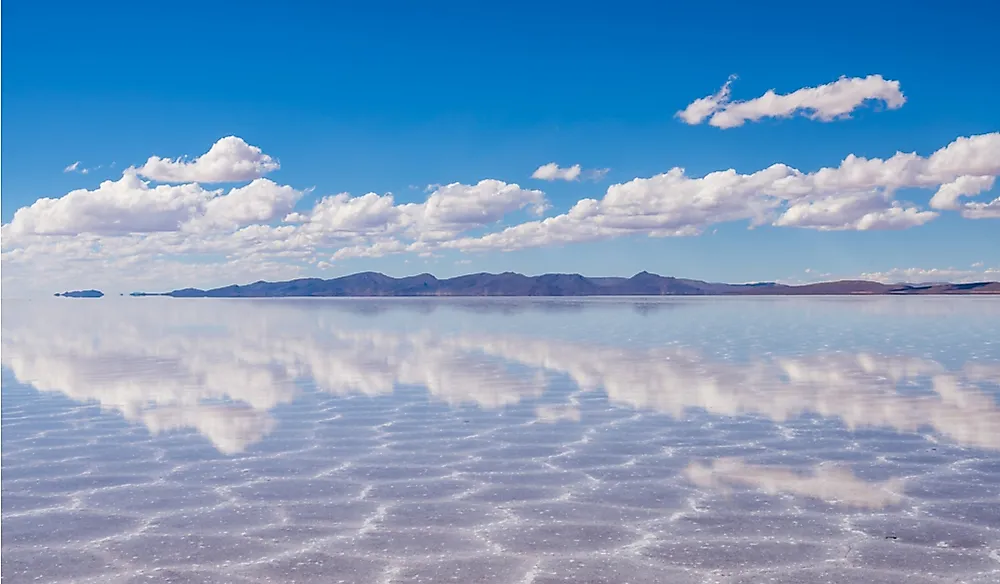Where Can You See The "World's Largest Mirror"?

The Andes is not only the longest mountain range in the world but is also home to some dozens of remarkable features including driest desert in the world, cloud forest, and the flattest surface on earth. The flat surface is characterized by a huge salt flat known for a bizarre light show, especially at night. Salar de Uyuni, located in Daniel Compos Province, Bolivia, near the crest of the Andes, is the world’s largest salt flat or salt pan at 4,086 square miles. A salt flat is a large expanse of land covered by salt. This salt flat is located at about 11,995 feet above the sea level. It is also known as the “world’s largest mirror” because of the layer of water that forms on the surface, especially after the rain.
Formation of the Salt Flat
Salar resulted from the transformations between different prehistoric lakes. It is a portion of Altiplano plateau in Bolivia which resulted from the uplifting of the Andes. It includes saltwater and freshwater lakes and several salt pans and has no drainage outlet as a result of the surrounding mountains. Several years ago (30,000-42,000) the region was covered by a large prehistoric lake known as Lake Minchin. The lake later became known as Lake Tauca with a maximum depth of 460 feet. The prehistory’s youngest lake was Lake Coipasa that also dried and left in its place two lakes; Uru Uru and Poopo. It also left behind two large salt deserts; Salar de Uyuni and Salar de Coipasa. Lake Poopo neighbors Lake Titicaca which overflows during the rainy season and fills the former which subsequently floods the two salt deserts. Salar is covered by a thick salt crust that is relatively flat with an average elevation variation of only three feet. The salt crust covers brine underneath which is a rich source of lithium, accounting for 50-70% of the world’s resource reserve.
The “World’s Largest Mirror”
During the rainy season, Salar de Uyuni gets flooded with water from the rain and the nearby Poopo Lake. The flooded salt field forms one gigantic reflective mirror that is approximately 80 miles across. This “large mirror” reflects the clouds and any element around it, creating a magnificent feature to behold. Tourists and photographers often flock this location to witness and capture this wonder. Salar de Uyuni is called the “world’s largest mirror” because it is the world’s largest salt flat, almost 100 times larger than the Bonneville Salt Flat in the United States and the “mirror” it forms is definitely the largest.
Satellite Calibration
Salt flats can be used to calibrate satellite’s distance measuring equipment because they are large and stable with strong reflection. Salar de Uyuni is particularly suitable for this function because of its high elevation and the absence of industries in the area. Between April and November, the sky over the area is very clear and the air is dry. This salt flat also has a stable surface that is smoothened by seasonal flooding. The surface reflection of the ultraviolet light is also very high, showing only a few variations during the day.











